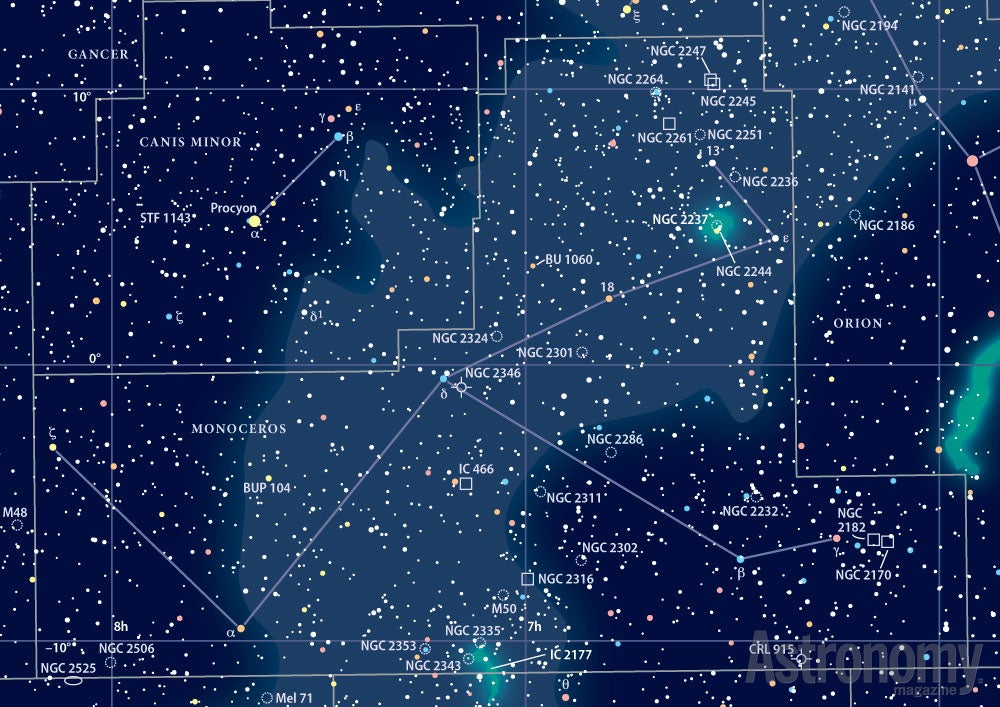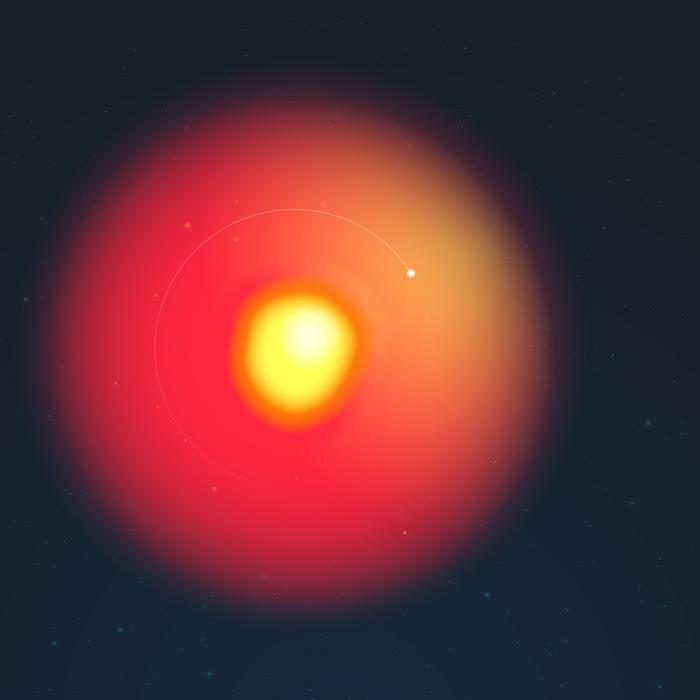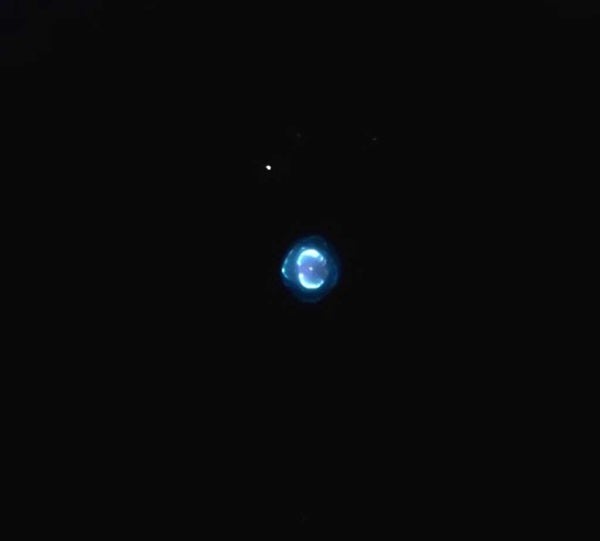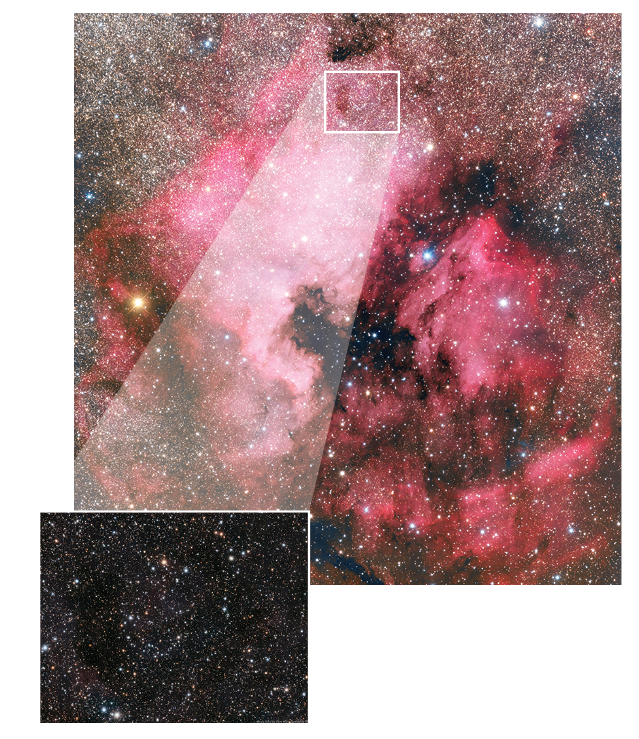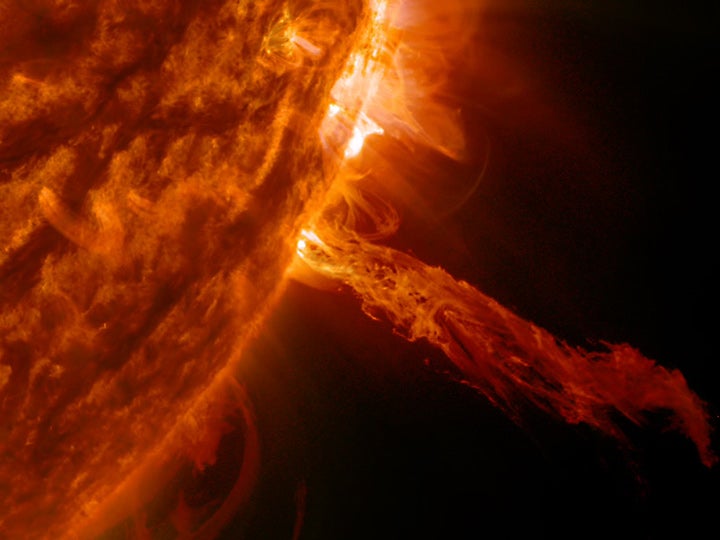Targets for January 30–February 6, 2014
Small telescope: Double star Adhara (Epsilon [ε] Canis Majoris)
Small telescope: Globular cluster NGC 2298
Large telescope: Hubble’s Variable Nebula (NGC 2261)
This week’s first small-telescope target is the double star Adhara, also known as Epsilon (ε) Canis Majoris.
Usually, binary stars entice observers because of their color contrast. And, although a subtle color difference is evident in this case, it’s the variance in the two stars’ brightnesses that make this system fun to observe. To find Adhara, look 12½° south-southeast of brilliant Sirius (Alpha [α] Canis Majoris).
At magnitude 1.5, the bluish primary outshines the magnitude 7.4 white secondary by some 230 times. Be patient when you observe this pair.
Although the separation — 7.5″ — would seem an easy split through a 4-inch telescope, you’ll need to crank the magnification past 150x to separate the components enough so the primary doesn’t overwhelm its companion.
The common name Adhara (sometimes spelled Adara) comes from the Arabic al Adhara, meaning “the virgins.” That name refers to a now-defunct constellation that included several other nearby bright stars.
Adhara is the second-brightest star in Canis Major, but its Greek letter label, Epsilon, indicates it should be fifth-brightest because Epsilon is the fifth letter in the Greek alphabet.
The practice of labeling bright stars in constellations with Greek letters began with German mapmaker Johannes Bayer when he published his classic star atlas Uranometria in 1603. As Adhara demonstrates, Bayer was not infallible. He should have designated it Beta.
A southerly globular
This week’s second object is globular cluster NGC 2298 in Puppis. It glows at magnitude 9.2 and measures 6.8′ across.
You’ll find it 5.8° west of magnitude 2.7 Pi (π) Puppis. Because it lies 40,000 light-years away, this globular does not appear dazzling, but it’s a refreshing change from all the open clusters in this part of the sky.
A 4-inch telescope shows it as a relatively smooth object with a broad, concentrated halo. At magnifications above 250x, you might see a graininess that suggests the presence of stars.
If you have the opportunity to view it through a 14-inch scope, you’ll see that the cluster looks much larger because of all the outlier stars you’ll be able to resolve.
At 300x, about 30 stars pop into view around a still-unresolved core.
An early Hubble object
This week’s large-telescope target is Hubble’s Variable Nebula — also known as NGC 2261 — in Monoceros. Although you can spot it through a 3-inch telescope, you’ll need at least a 12-inch scope at 250x to give this object some pop. You’ll find it 2° northeast of the magnitude 4.5 star 13 Monocerotis.
Hubble’s Variable Nebula is a fascinating reflection nebula associated with the variable star R Monocerotis.
NGC 2261 appears triangular, almost comet-like, with the comet’s “head” pointing southward. The nebula’s brightness appears even across its face, and, except for the northern side, all edges look sharp. Most of the time, it appears 3.5′ by 1.5′.
Why is the nebula variable? A current theory states that dense knots of opaque dust pass close to R Monocerotis. As they do, they cast slowly moving shadows that fall on the dust in the nebula that reflects most of the light.
Sir William Herschel discovered Hubble’s Variable Nebula in 1783. The nebula’s common name comes from American astronomer Edwin Hubble, who studied it extensively starting in 1916 at Yerkes Observatory in Wisconsin.
And here’s an additional bit of trivia for you: According to the California Institute of Technology, Hubble’s Variable Nebula was the first object photographed through the 200-inch Hale telescope at Palomar Observatory. Hubble sat in the prime focus cage of that instrument and recorded an image of it January 26, 1949.
Expand your observing at Astronomy.com
StarDome
Check out Astronomy.com’s interactive StarDome to see an accurate map of your sky. This tool will help you locate this week’s targets.
The Sky this Week
Get a daily digest of celestial events coming soon to a sky near you.
Observing Talk
After you listen to the podcast and try to find the objects, be sure to share your observing experience with us by leaving a comment at the blog or in the Reader Forums.

